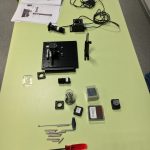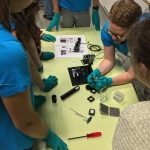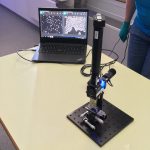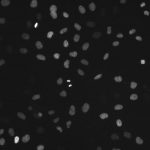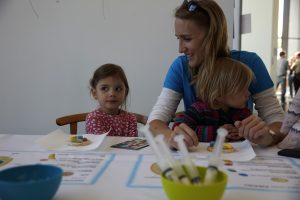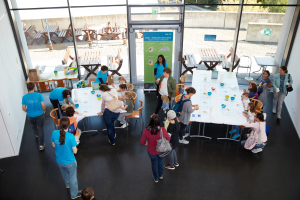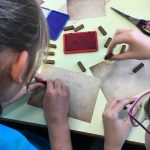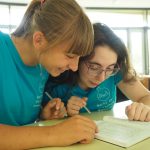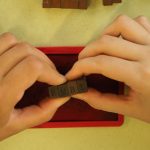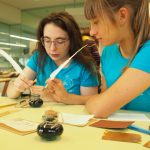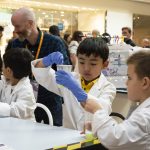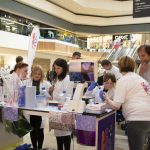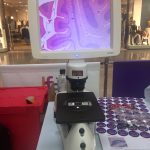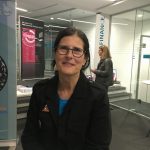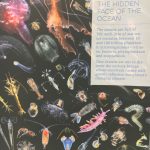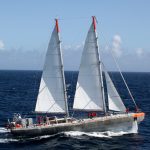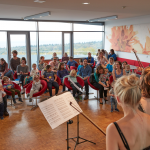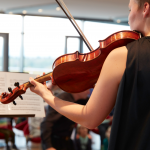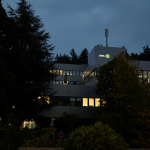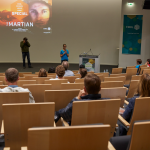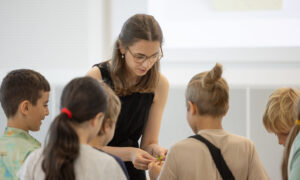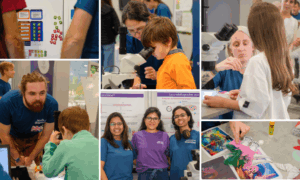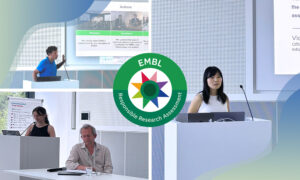
Night of research, culture and treats
The EMBL Teen reporters discover the European Researchers’ Night
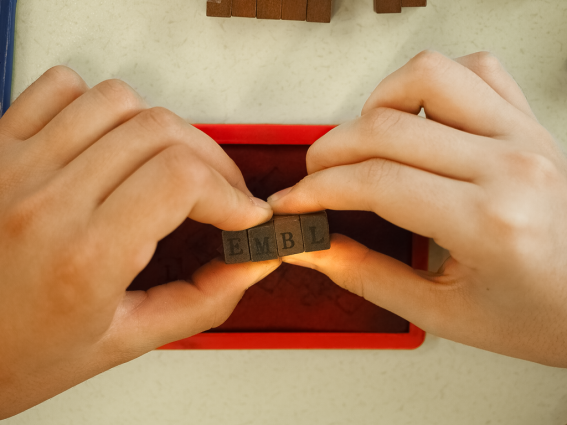
European Researchers’ Night is Europe’s biggest science festival. This year, Heidelberg and Mannheim participated for the first time. EMBL’s European Learning Laboratory for the Life Sciences (ELLS) was responsible for organising Heidelberg and Mannheim’s participation in the festival, and secured funding from the European Commission for both 2018 and 2019. On 28 September, ten research institutes in and around Heidelberg were invited to take part in the ‘Nacht der Forschung Heidelberg | Mannheim’ (Night of Research Heidelberg | Mannheim), together offering more than 130 activities. Over 9300 curious visitors came along to experience the beauty of science. The 1300 visitors at EMBL had the opportunity to visit the labs and talk to scientists, who presented their work in various ways, including in pictures, through dance, and on stage. We asked the EMBL Teens reporters to cover the event up close.

IMAGE: Patrick Müller / EMBL
Patricia Heintze (left) is 18 years old and joined the EMBL Teens two years ago. She began studying biology in Heidelberg this year. She enjoys the many possibilities that Heidelberg offers to visit research institutes, but she only gets a behind-the-scenes look when she’s with the EMBL Teens.
Maria-Theresa Licka (right) is 15 years old and joined the EMBL Teens just a few months ago. She’s interested in biology and enjoys the direct interactions with scientists that are possible at European Researchers’ Night.
Do it yourself: fluorescence microscope
Equipped with a load of curiosity and a programme filled with activities, and with the whole night still ahead of us, we enter EMBL’s Advanced Training Centre (ATC). Our first activity is already quite demanding: we have to build our own fluorescence microscope. After a short introduction, we get hands-on experience. Because we’re working with valuable and sensitive components, we have to wear gloves so that we don’t leave fingerprints. With the help of the friendly EMBL staff, we’re able to build our own microscope. We test it with different cell types. By the end of the project, we’ve taken a cell snapshot, built our own working microscope and understood how it works. A great success!
Sweet biology
Then – surrounded by lots of hungry children – we get creative and make cell cookies. We use rice crackers as a base and make the organelles out of candies, fixing them with frosting. The gloves from the fluorescence microscope workshop would have been useful. This station combines creativity, biology and a treat. What more could you wish for?
How have insights been archived and published in the past?
In the next workshop, organised by EMBL’s Szilárd Library, we travel through time from 18 000 BCE until today. We travel from Mesopotamia, through India, to China, and from the Middle Ages to the 21st century and record our knowledge using ancient techniques. We write on silk, palm leaves, and leather, cut writing into clay tablets or print in Gutenberg’s workshop. It seems really outdated to put in so much effort for so few words. Nowadays, access to research is much easier. Scientists have even developed ways to store data in DNA. It’s very interesting to try the different techniques ourselves, but in the end we’re very happy that we live now.
Short digital excursion to EMBL-EBI
On the way to the next workshop, we stop for a short break. Our friends at EMBL-EBI in Hinxton, UK, report from their Researchers’ Night. The event is not just happening in Heidelberg, but all over Europe. At EMBL-EBI, you can figure out how your DNA shapes your sense of smell and taste. There, our cell cookies would probably be flying off the shelves.
Pipette-swinging scientists
After the break, we climb the double helix (the inner structure of the ATC resembles DNA: two parallel spirals lead from the entrance to the rooftop). On our way towards our next adventure, we suddenly hear music. Multiple pipette-swinging EMBL scientists in their lab coats begin to perform a choreographed dance routine. Dazzled by the flash mob, the visitors stop and watch the dance from the best positions along the helix.
What is Tara Oceans?
After the flash mob, we walk happily to the Tara Oceans exhibition, which draws many visitors. The place is crowded. Tara Oceans is an expedition that aims to investigate the marine ecosystem by collecting data on the life of plankton in the oceans. In the ATC, giant 3D pictures of various types of plankton that have been discovered during the expedition are presented. We have the opportunity to discover the underwater world using VR googles and discuss it with the scientists involved. We talk to Steffi Kandels-Lewis, who is the manager of scientific operations and logistics for Tara. She explains: “The unique feature of Tara Oceans is its interdisciplinarity. Oceanographers, biologists and bioinformaticians came together to analyse the complex data.” Combining so many disciplines on one sailing ship requires a lot of coordination, but also leads to unique results. Tara Oceans shows that interdisciplinarity enriches science!
A storm on Mars is only as strong as a fan
At the end of the day, we feast on popcorn and cola and watch the movie The Martian. The film is about an astronaut called Mark Watney (played by Matt Damon), who is left on Mars after a failed mission and has to fight for his survival. It’s part of the series of ‘EMBL Science Movie Night’ events, in which scientists put the accuracy of Hollywood movies to the test. Every now and then, they stop the movie for discussion. Unlike in the cinema, nobody blames them!
At the beginning of the movie, there’s a giant sand storm on Mars. It damages the spacecraft severely and leads to an emergency launch that leaves Watney alone on Mars. Ludmila Carone from the Max Planck Institute for Astronomy in Heidelberg and Rafael Galupa from EMBL explain that, in reality, such a storm wouldn’t be stronger than a normal fan. We become aware that the reality sometimes is just not spectacular enough for Hollywood. Roughly in the middle of the movie, there’s a longer break to restock with snacks and drinks. During this time, the Junge Kammerphilharmonie Rhein-Neckar plays. We listen to the beautiful sounds, happy and well fed.
It was a great night. We learned a lot, but had even more fun. We can’t wait to come back next year.
